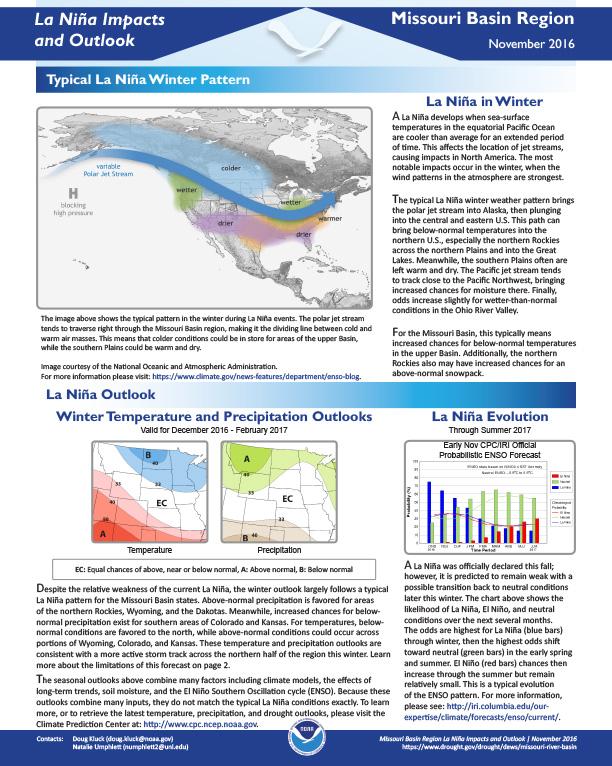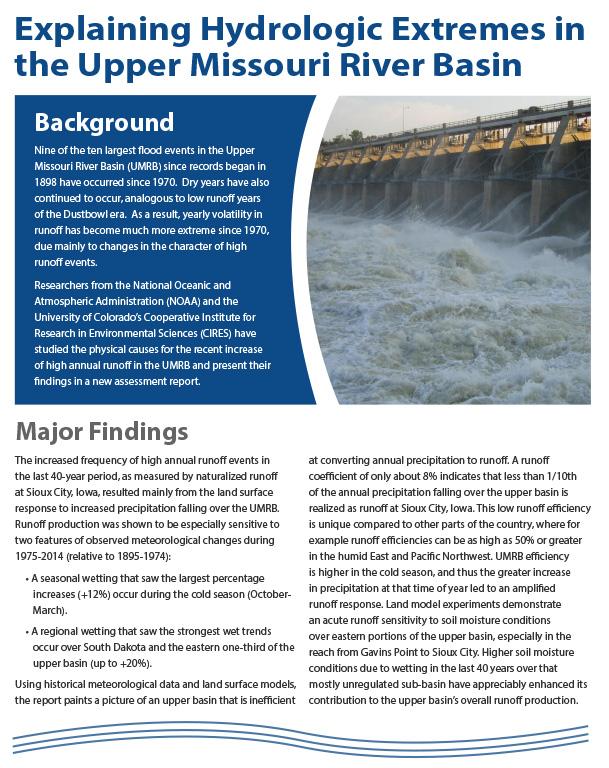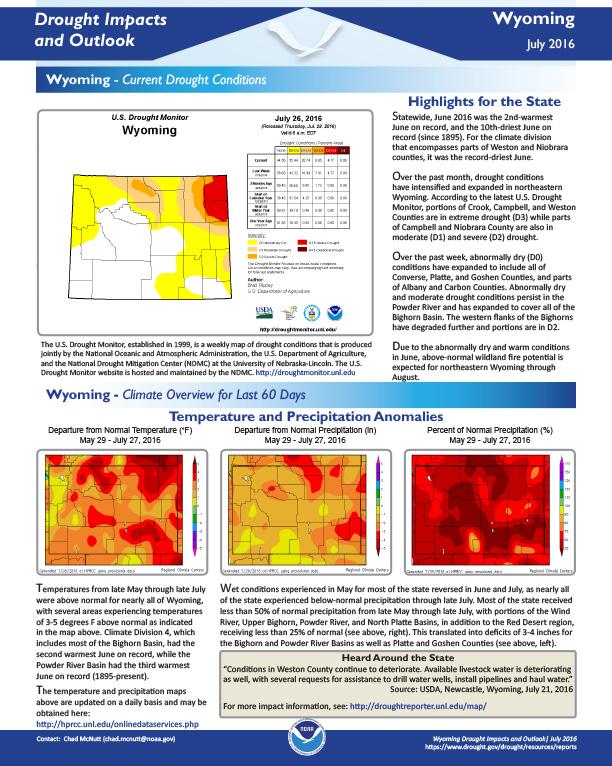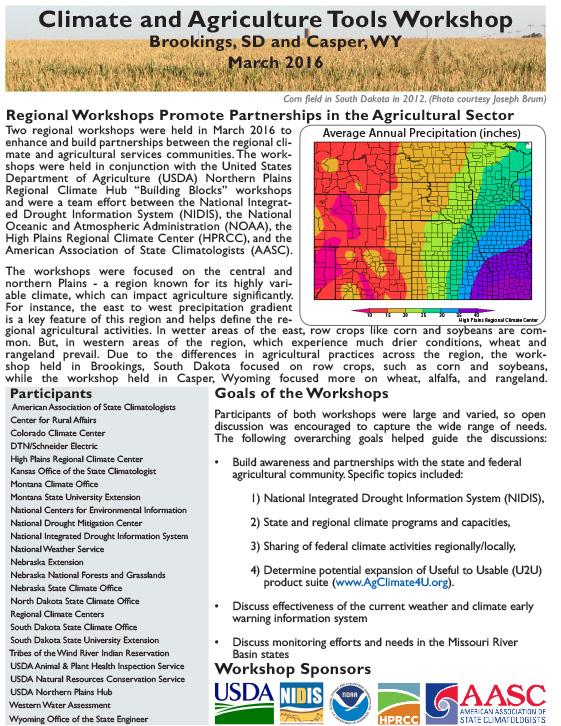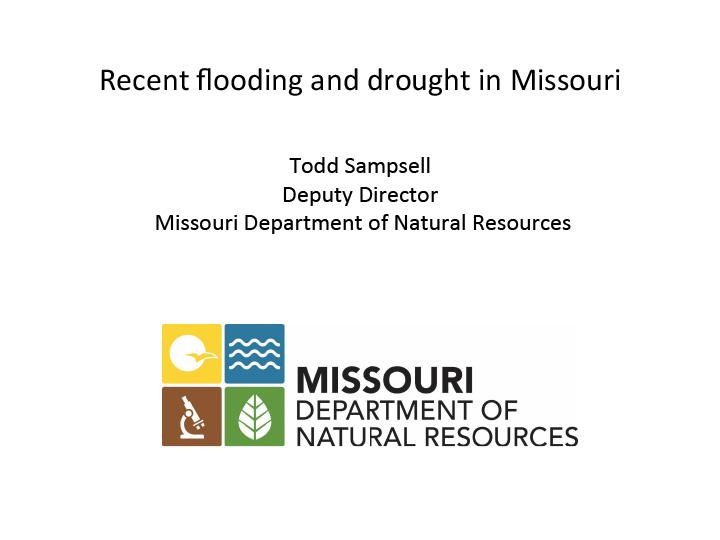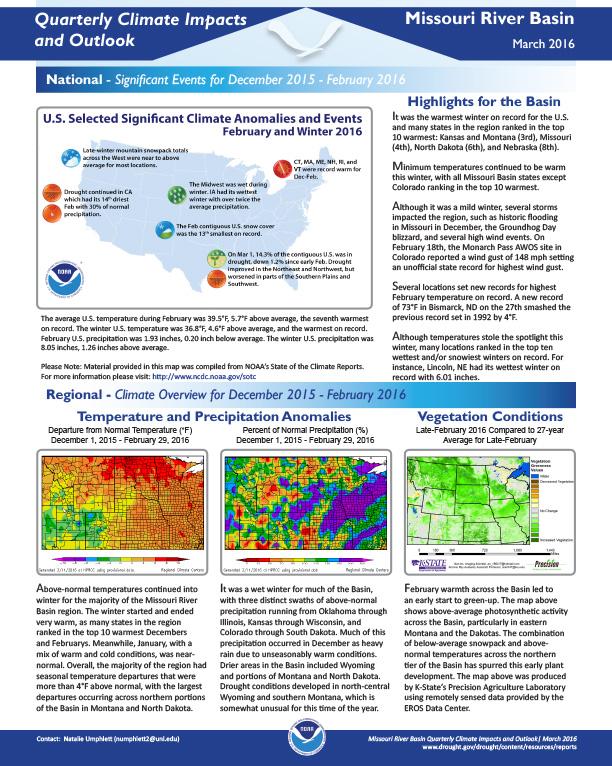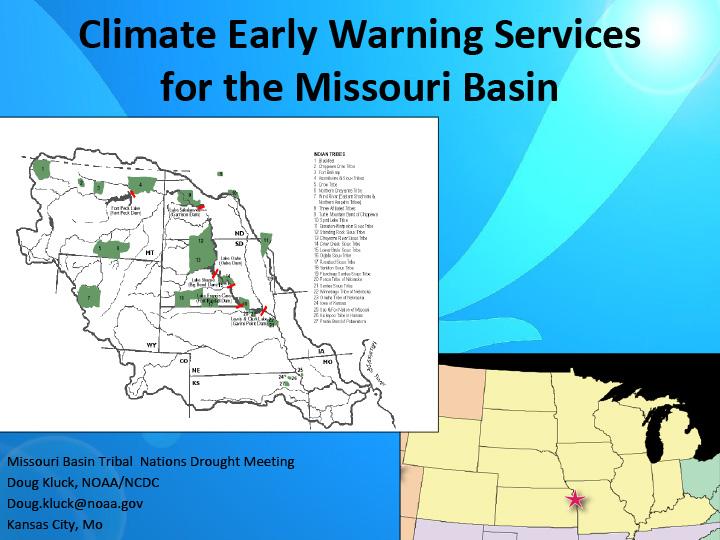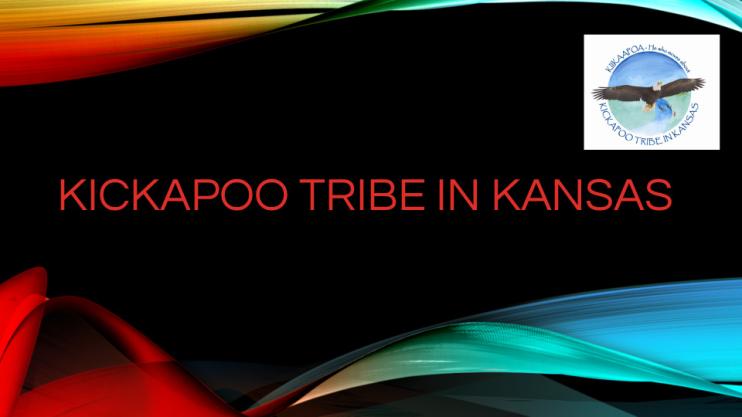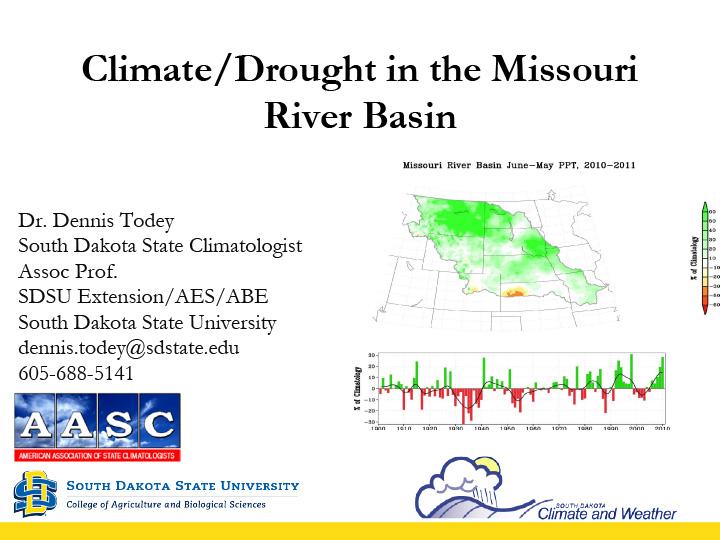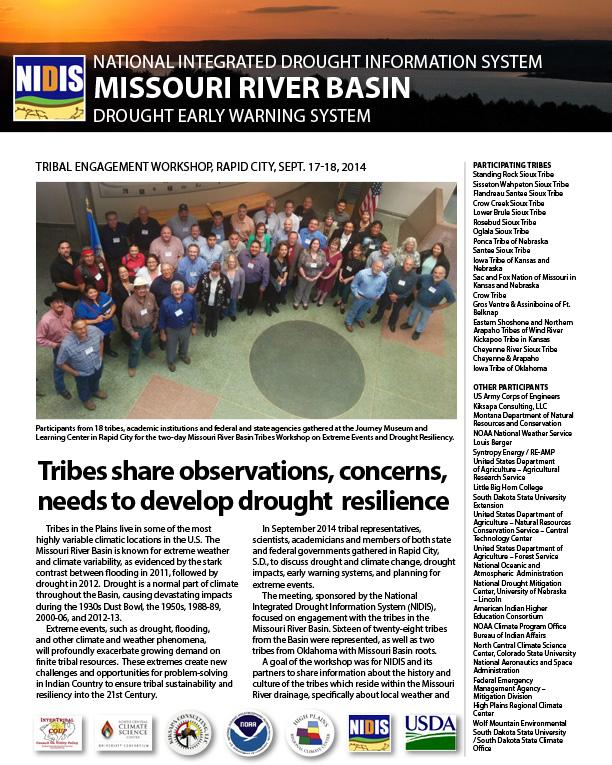Defines La Niña; gives outlook for winter temperatures and precipitation; possible effects of La Niña on the Missouri Basin, including agriculture, the economy, and the river itself.
Two-page summary of the Climate Assessment Report: Causes for Hydrologic Extremes in the Upper Missouri River Basin. The report demonstrates a strong physical connection between the increased frequency of high annual runoff events in the UMRB and the increase in precipitation falling over the upper basin.
Drought conditions, temperature and precipitation anomalies, evaporative demand, weather/climate/wildfire outlooks for Wyoming at the end of July 2016.
Two-pager describes regional workshops held in March 2016 in Brookings, SD and Casper, WY to enhance and build partnerships between the regional climate and agricultural services communities.
A presentation given by Todd Sampsell of the Missouri Department of Natural Resources at the Midwest Climate Outlook and Drought Early Warning System Kickoff Meeting that took place February 9-11, 2016 in St. Louis, Missouri. Provides photographic as well as quantitative data to show the recent tendencies in the state of Missouri over the last few years for both floods and drought to occur close together and often.
Quarterly Climate Impacts and Outlook for the Missouri River Basin December 2015 – February 2016. Dated March 2016.
Presentation given at the Extreme Events and Drought Resiliency workshop held September 17-18, 2014 in Rapid City, South Dakota. Discusses extreme weather events that have occurred in the Missouri River Basin over the last decade and the damage they caused. Presentation also provides various resources for stakeholders that deal with weather and drought in the High Plains.
Presentation given at the Extreme Events and Drought Resiliency workshop held September 17-18, 2014 in Rapid City, South Dakota. Presentation discusses the climate in the region where the Kickapoo Tribe resides, including extreme weather events and the major droughts that occurred in 2000 and 2003. Presentation goes on to talk about what is required in order for the tribe to be able to react to drought conditions that might spring up in the future.
A presentation by Dr. Dennis Todey that was presented at the Extreme Events and Drought Resiliency workshop that took place in Rapid City, South Dakota September 17-18, 2014. Provides a good deal of data on the climate of the region and the United States as a whole.
Two-pager recounts Tribal Engagement Workshop in Rapid City, SD held Sept. 17-18, 2014. Includes participant list, next steps, link to presentations and map of Tribal Lands in Missouri River Basin.


